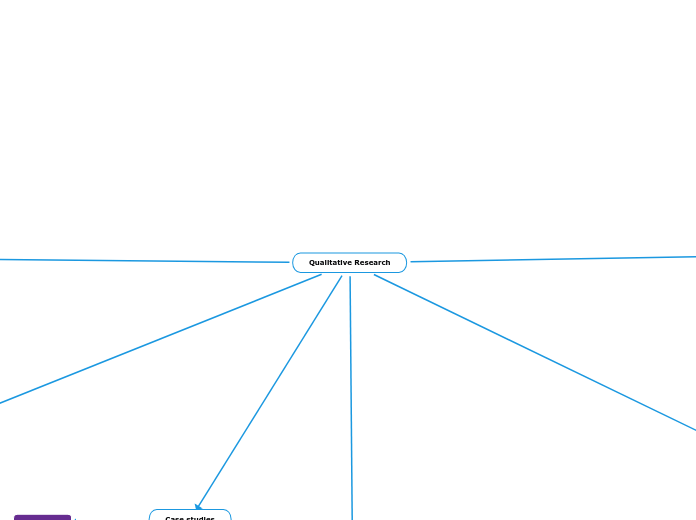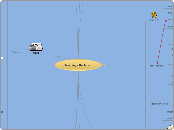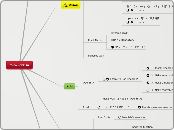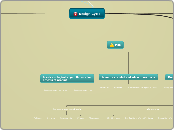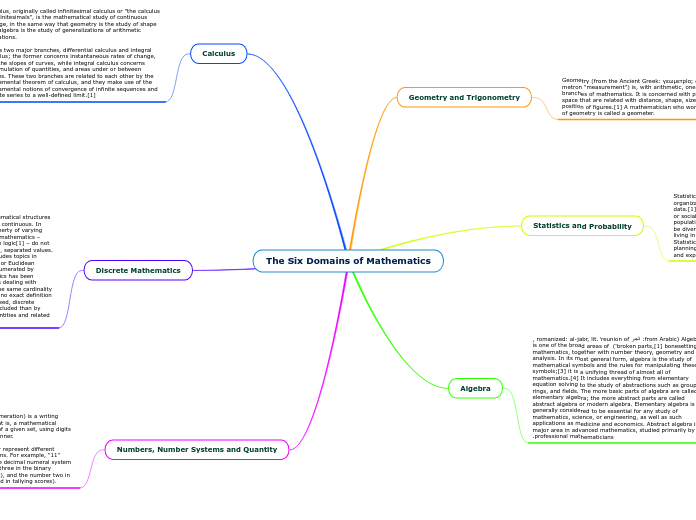Qualitative Research
Phenomenological research
It describes the meaning for several individuals of their lived experiences of a concept or a phenomenon. The researcher focuses on describing what all participants have in common.
Purpose - Understanding the lived experiences.
Challenge
In it, participants need to be carefully chosen to be individuals who have all experienced the phenomenon in question.
The researcher needs to decide how and in what way his or her personal under standings will be introduced into the study.
Transcendental or psychological phenomenology
focused on a description of the experiences of participants
Hermeneutical phenomenology
describes research as oriented toward lived experience and interpreting the "texts" of life
1. Determining if the research problem is best examined using a this approach.
It is used when it is important to understand several individuals' common or shared experiences of a phenomenon.
2. Recognizing and specifying the broad philosophical assumptions of phenomenology.
Describing how participants view the phenomenon, researchers must bracket out, as much as possible, their own experiences.
3. Collecting data.
It is collected from the individuals who have experienced the phenomenon.
- Observations
- Journals
- Forms of art
- Taped conversations
- Formally written
4. Asking questions.
Asking general and open-ended questions that focus attention on gathering data that will lead to a textural description and a structural description of the experiences.
5. Data analysis
- Building on the data from the first and second research questions.
- highlight "significant statements," (these provide an understanding of how the participants experienced the phenomenon.)
6. Writing a description.
Significant statements and themes are then used to write a description of what the participants experienced (textural description); imaginative variation or structural description.
7. Writing a composite description that presents the essential, invariant structure
Narrative research
Procedures focus on studying one or two individuals, gathering data through the collection of their stories, reporting individual experiences, and chronologically ordering the meaning of those experiences.
1. Determining if the research problem or question best fits narrative research.
It is best for capturing the detailed stories or life experiences of a single life or the lives of a small number of individuals.
2. Choosing individuals.
Researchers choose one or more individuals who have stories or life experiences to tell, and spend considerable time with them gathering their stories through multiples types of information.
3. Collecting information about the context of these stories.
Narrative researchers situate individual stories within participants' personal experiences.
4. Analizing data.
- Researchers analyze the participants' stories.
- Restorying
- Framework (gathering stories, analyzing them for key elements of the story)
- Rewriting the stories to place them within a chronological sequence
5. Collaborate with participants by actively involving them in the research.
As researchers collect stories, they negotiate relationships, smooth transitions, and provide ways to be useful to the participants.
The researcher needs to collect extensive information about the participant and needs to have a clear understanding of the context of the individual's life.
Identify in the source material gathered the particular stories that capture the individual's experiences.
Researchers need to discuss the participant's stories as well as be reflective about their own personal and political background.
Personal experience story
Study of an individual’s personal experience found in single or multiple episodes, private situations, or communal folklore.
Life history
It is a narrative story of the entire life experiences of a person.
- Life writing
- Personal accounts
- Personal narratives
- Narrative interviews
- Personal documents
- Documents of life
- Ethnohistories
- Ethnobiographies
- Autoethnographies
- Ethnopsychologies
- Person-centered ethnographies
- Popular memories
- Latin American testimonios
- Polish memoirs
Autobiography
The individual who is the subject of the study writes the account.
Biography
In it, the researcher writes and records the experiences of another person’s life.
Definition
It is a strategy of inquiry in which the researcher studies the lives of individuals and asks one or more individuals to provide stories about their lives.
Topic principal
Issues are central to conducting action research that involves participants in a substantial way.
The researcher needs to conduct the inquiry in a way that respects the care of the participants,and involves them collaboratively in all phases of the research.
Participatory
It studies social issues that constrain individual lives. The researcher focuses on “life-enhancing” changes.
To improve the quality of people’s organizations, communities, and family lives.
Practical action research
Study of local practices that focuses on teacher development and student learning. It implements a plan of action leaded to the teacher.
Small-scale research project, narrowly focuses on a specific problem or issue
To research a specific school situation with a view toward improving practice.
It has a flexible process and no blueprint exists for how to proceed.
1. Determining if action research is the best design to use.
It is used to address a problem, It requires time to collect and analyze data and it experiments with different options for solving the problem.
2. Identify a problem to study.
It may be one that you face in your own practice or in your community.
3. Locating resources to help address the problem.
Resources to help study the problem. Literature and existing data may help you formulate a plan of action. You may need to review the literature and determine what others have learned about solving the issue.
4. Identifying information you will need.
- Plan a strategy for gathering data.
- Decide who can provide data, how many people you will study, what individuals to access, and the rapport and support you can expect to obtain from them.
5. Implement the data collection.
- Organizing it into data files for numeric or theme analysis.
- Examining the quality of the information.
6. Analyzing the data.
7. Developing a plan for action.
New educational practice. It might be a plan to reflect on alternative approaches to addressing the problem or to share what you have learned with others,
8. Implementing the plan and reflect.
The researcher will implement the plan of action to see if it makes a difference.
It involves trying out a potential solution to your problem and monitoring whether it has impact.
It is systematic procedure done by teachers to gather information about, and improve the ways their particular educational setting operates, their teaching, and their student learning.
When is it used?
We use action research when you have a specific educational problem to solve.
Case studies
Researcher must decide which bounded system to study, recognizing that several might be possible candidates for this selection.
Deciding the "boundaries" of a case-how it might be constrained in terms of time, events, and processes-may be challenging.
Strategy of inquiry that studies an issue explored through one or more cases (program, event, activity, process, or one or more individuals) within a bounded system.
collective case study
In it, the one issue is again selected, but the inquirer selects multiple case studies to illustrate the issue. The researcher selects multiple cases to show different perspectives on the issue.
intrinsic case study
It focuses on the case itself because the case presents an unusual or unique situation.
instrumental case study
The researcher focuses on an issue or concern, and then selects one bounded case to illustrate this issue.
1. To determine if a case study approach is appropriate to the research problem.
It is used when the inquirer has clearly identifiable cases with boundaries and seeks to provide an in depth understanding of the cases or a comparison of several cases.
2. Identify their case or cases.
These cases may involve an individual, several individuals, a program, an event, or an activity; the type of case study is most promising and useful.
3. Data collection.
- observations
- interviews
- documents
- audiovisual materials
4. Data analysis.
Data can be a holistic analysis of the entire case
Through data collection, a detailed description of the case emerges.
- The researcher might focus on a few key issues (or analysis of themes) for understanding the complexity of the case.
- Cross-case analysis
- Interpretation of the meaning of the case.
5. Interpretive phase.
The researcher reports the meaning of the case, whether that meaning comes from learning about the issue of the case or learning about an unusual situation.
Grounded theory
- It moves beyond description and generate or discover a theory, an abstract analytical schema of a process.
- Participants in the study would all have experienced the process.
- The theory might help explain practice or provide a framework for further research.
investigator needs to set aside, as much as possible, theoretical ideas or notions so that the analytic, substantive theory can emerge. the researcher must recognize that this is a systematic approach to research with specific steps in data analysis,
faces the difficulty of determining when categories are saturated or when the theory is sufficiently detailed.
1. Determining if grounded theory is best suited to study the research problem.
It is used when a theory is not available to explain a process.
2. Research questions.
These focus on understanding how· individuals experience the process and identifying the steps in the process then the researcher returns to the participants and asks more detailed questions.
- observations
- documents
- audiovisual materials
3. These questions are asked
4. Analysis of the data stages. Open coding. The researcher forms categories of information about the phenomenon being studied by segmenting information. He or she looks for data to dimensionalize.
Axial coding. The reseracher assembles the data in new ways after open coding then, it is presented using a coding paradigm in which is identified a central phenomenon, he or she explores causal conditions, specifies strategies, identifies the 'context and delineates the consequences for this phenomenon.
Selective coding. The researcher write a text that connects the categories. The hypotheses may be specified that state predicted relationships.
5. Result of process of data collection and analysis.
The result is a theory. It emerges with help from the process of memoing.
Constructivist Design
It focuses on the meanings ascribed by participants in a study.
- Any conclusions developed are suggestive, incomplete, and inconclusive.
- The narrative is written to be more explanatory, more discursive, and more probing of the assumptions and meanings for individuals in the study.
Emerging Design
In it, the researcher builds a theory and discusses the relationship among categories without reference to a diagram or picture.
Systematic Design
It emphasizes the use of data analysis steps of open, axial, and selective coding, and the development of a logic paradigm or a visual picture of the theory generated. In this definition, three phases of coding exist.
Phases of coding
1st phase. (open coding) The researcher forms initial categories of information about the phenomenon being studied by segmenting information. He bases categories on all data collected.
2nd phase. (axial coding) The researcher selects one open coding category, positions it at the center of the process being explored, and then relates other categories to it.
3rd phase. (selective coding) The researcher writes a theory from the interrelationship of the categories in the axial coding model. This theory provides an abstract explanation for the process being studied in the research.
Strategy of inquiry in which the researcher derives a general, abstract theory of a process, action, or interaction grounded in the views of participants.
Ethnography
Characteristics
- It involves extended observations of the group.
- Information acquired through participant observation, in which the researcher is immersed in the day-to-day lives of the people.
- It studies the meaning of the behavior, the language, and the interaction among members of the culture-sharing group.
Challenges
It is challenging because
- It needs to have a grounding in cultural anthropology and the meaning of a social-cultural system as well as the concepts explored.
- The time to collect data is extensive.
- It is challenging for authors accustomed to traditional approaches to writing social and human science research.
- There is a possibility that the researcher will "go native" and be unable to complete the study or be compromised in the study.
Procedures
1. Determine if ethnography is the most appropriate design to use to study the research problem.
It is appropriate if the needs are to describe how a cultural group works and to explore the beliefs, language, behaviors, and issues.
2. Identify and locate a culture-sharing group to study.
This group is one that has been together for an extended period of time, so that their shared language, patterns of behavior, and attitudes have merged into a discernable pattern.
3. Select cultural themes or issues to study about the group. This involves the analysis of the culture-sharing group.
To study cultural concepts, determine which type of ethnography to use.
4. Gather information where the group works and lives (fieldwork).
Going to the research site, respecting the daily lives of individuals at the site, and collecting a wide variety of materials.
- observations
- tests and measures
- surveys
- interviews
- content analysis
- interviews
5. Analyzes the data
Analizing the data for a description of the culture-sharing group focusing on a single event, on several activities, or on the group over a prolonged period of time.
6. Final product of the analisis.
Forge a working set of rules or patterns. The final product is a holistic cultural portrait of the group that incorporates the views of the participants.
Types
- Life history
- Autoethnography
- Microethnography
- Feminist ethnography
- Postmodern ethnography
- Ethnographic novels
Critical ethnography
Type of ethnographic research in which the authors advocate for the emancipation of groups marginalized in society. Its components include a value-laden orientation, empowering people, challenging the status quo, and addressing concerns about power and control.
Realist ethnography
an approach that reflects a particular stance taken by the researcher toward the individuals.
It is an objective account of the situation, written in the third person point of view and reporting objectively on the information learned from participants at a site.
What is it?
It is a strategy of inquiry that focuses in examining patterns of behavior, beliefs, and language shared in a cultural group.
